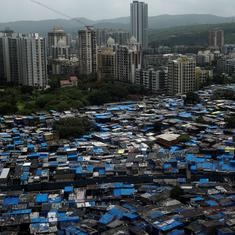Would there be a crisis between the Centre and the Reserve Bank of India had it not been for demonetisation? In some ways, that question is impossible to answer. There is no direct line to be drawn from Prime Minister Narendra Modi’s infamously unsuccessful move to replace 86% of currency in 2016, to the current situation, in which the government is reported to be threatening to use unprecedented emergency powers over the central bank. But it may be worth contemplating anyway.
First a recap. Demonetisation was announced exactly two years ago. On the evening of November 8, 2016, Modi declared in a television address that all Rs 500 and Rs 1,000 notes would no longer legal tender and would have to be replaced by new Rs 500 and Rs 2,000 notes. He said this would destroy black money, end the spread of fake currency and prevent terrorist financing. It was, of course, a massive failure.
The government told the Supreme Court that it expected a third of the currency not to come back to the banking system, giving it a huge dividend. In fact, more than 99% of the notes were returned, sending the Modi government’s hopes of “breaking the back” of corruption and black money up in flames. Besides, the new currency notes had no additional security features from previous ones, meaning that counterfeit currency is circulating once again. As if this isn’t enough, there has been no data to suggest terrorist activity in India has reduced following the note ban.
Realising this, the government quickly shifted tack and attempt to come up with several other reasons for demonetisation, most of which were forgotten as quickly as they were announced. But even the ones that stuck around have been questioned, such as the claim that demonetisation widened the tax base and increase compliance, thereby reducing corruption. As many have pointed out, the increase in direct tax collections following the note ban are no higher than they were in 2010-’11. Currency held by the public is now at a record high, with some pointing out that people are hoarding cash because they no longer trust ATMs following demonetisation.
Tremendous pain
Crucially, the failure of demonetisation was evident not just in the fact that it missed its targets. It also caused a huge amount of pain across India’s economy and shook the faith of ordinary people in the banking system. The shoddy implementation of the project, with not enough new notes available, meant that it took months before there was sufficient cash in the system again. In a country where millions depend on cash rather than digital transactions, it caused genuine economic distress. Data suggests this pain has caused a long-term crisis in rural India, with the effects still playing out.
Indeed, there may be no better proof of demonetisation’s utter failure than the fact that Modi and his Bharatiya Janata Party simply do not talk about it any more.
But, as economic journalist C Rammanohar Reddy notes, there is one level at which the note ban was successful. “There is a fear that if the state can at one stroke remove 86% of the cash in circulation and thereby dishonour something as basic as legal tender, what could it possibly do next?” he wrote. “This is perhaps the true permanent outcome of the demonetisation of 8 November 2016 – the demonstration of naked state power that now makes people fear that the state can without any thought and discrimination hurt who it wants and where it wants.Perhaps that was the true aim of demonetisation.”
This is true for citizens, in a state that is increasingly willing to be authoritarian while also giving impunity to those breaking the law if it so prefers. But it also seems to be true at an institutional level. If the Centre could do as it wished with India’s currency, without listening to the opinion of those in the central bank who are responsible for managing the rupee, what is to stop it from undermining and attacking other institutions?
Orders to RBI
The possibility of the government directing the Reserve Bank of India to transfer some of its reserves to the Centre using Section 7, which allows the finance ministry to issue orders to the bank, would illustrate this even more directly.
Simply put, if demonetisation had been so successful, would the government even need the Reserve Bank of India’s cash to bridge its growing deficit? If the note ban had not been such a disaster, would the government have needed to float the use of unprecedented powers to clean up its own mess? If the Reserve Bank had held firm in 2016 and refuse to allow Modi to implement his demonetisation plan, would the government have felt empowered to play its brinksmanship game in an election year when, by its own admission, the economy is hardly in such a severe crisis that warrants the invoking of unprecedented provisions? Is the current crisis proof that, even if it seems like demonetisation is properly in the rear-view mirror, its damaging effects are still all around us?










